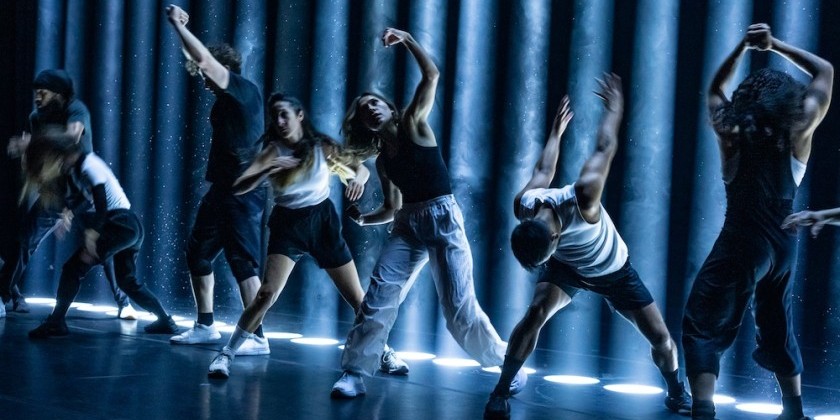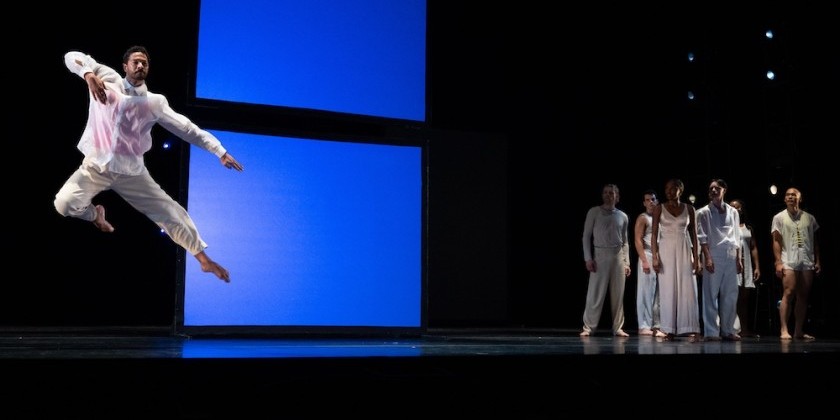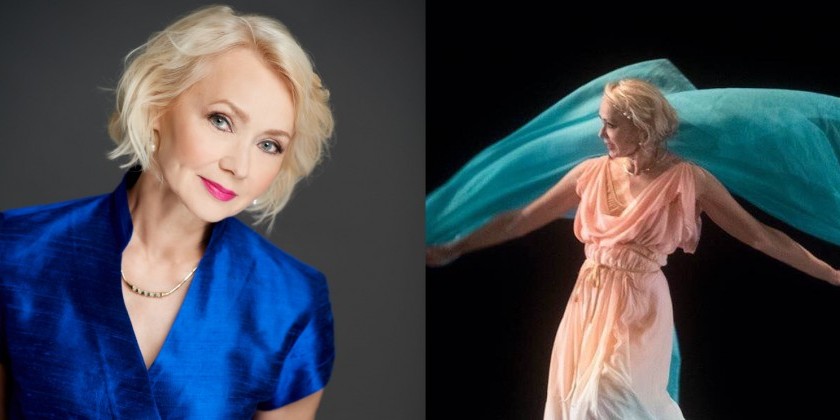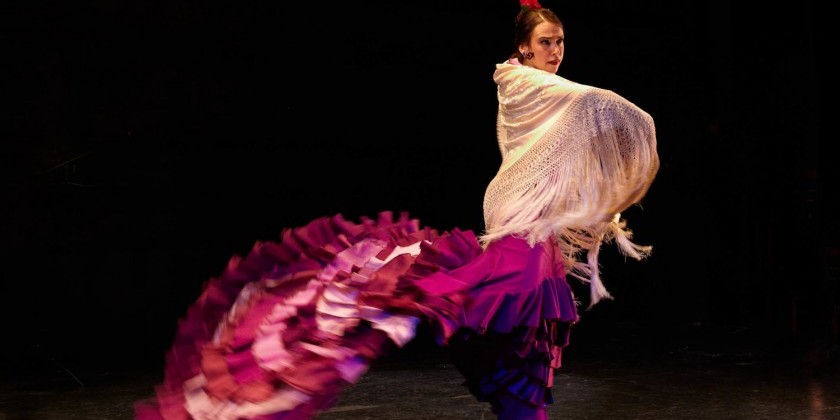The Dance Enthusiast Asks: TrioDance Collective and Nouveau Classical Project

About Potential Energies - a Millennial Generation ballet
An Interview with Barbie Diewald, a Choreographer with TrioDance Collective + Sugar Vendil, Artistic Director of Nouveau Classical Project
In anticipation of “Potential Energies,” a One-night Only Performance At Brooklyn Academy of Music (BAM) on May 29th
A new performance titled Potential Energies proves that music holds the power to inspire movement, even among musicians. Dancers and musicians alike will surrender themselves to movement, thus blurring the line between a classical concert and a live dance piece.
Potential Energies is a joint effort between choreographer Barbie Diewald of TrioDance Collective, Nouveau Classical Project headed by Sugar Vendil, and composer Trevor Gureckis. This holy trinity of Millennials is ready to prove the cynics wrong about their so-called ‘bleak’ future.
The Dance Enthusiast: Hey, Sugar! I’ve been hearing so much about Nouveau Classical Project and am delighted to finally be speaking with you. NCP has gained quite a reputation for mashing up fashion and music. This time though, you turn your attention to the marriage of music and dance. Could you expound on Potential Energies?
Sugar Vendil: When I conceived this project, my main goal was to explore how musicians could be brought to the foreground and become an equal presence with the dancers. An essential part of this project is to encourage musicians to create movement, which is a new process for most of us.
Fashion, while still involved in this production, it is not the featured collaboration as the focus is on dance and music. Our most obvious priority was to have garments that fit our aesthetic and prove easy to move in. From the start, I knew I wanted to use Atelier de Geste tights, which are very striking and well known. They have been used in a variety of photo shoots and even Pharrell’s “Marilyn Monroe” music video.
TDE: How’s it going, Barbie? I don’t think The Dance Enthusiast has worked with TrioDance Collective before and I’m glad this project is breaking the ice.
Having watched the trailer for Potential Energies, I noted something particularly fascinating. It goes without saying that dance has long been entwined with music, but this statement becomes literal in Potential Energies – physical interaction between the dancers and the musicians comes into play. Did any of the musicians have previous dance experience?
BD: In the beginning, the dancers and I just watched the musicians, studying the distinct natural movements that rose out of their individual practices. I became obsessed with the way an extended bow or flute changed the shape of the body, the subtle wrist lifts and elbow changes, and the tension in different parts of the body. Those idiomatic movements were perused, exaggerated, repeated, and strung together to create much of the movement vocabulary of the ballet.
Marina Kifferstein, our violinist, studied dance growing up, and she was very receptive to opening up her process and letting us in right away. Mara Mayer, our clarinetist, is a yoga instructor, so she has good access to her physical facility, but most of the other musicians had no formal dance training going into this. Of course, Sugar will be the first one to tell you how much she loves to dance, which has been quite glorious, even though she plays piano in this piece, the only instrument that we cannot move freely around the space. I knew Sugar was seeking a way to subvert the traditional chamber music performance format with Potential Energies so we talked about blurring the line between dancers and musicians while respecting the integrity of and distinction between our respective disciplines.
One of our first steps was to find common ground. A major conceptual tenet is that each musician is connected to a dancer. The musicians represent realities while the dancers take on more dream-like roles. Each pair discussed their personal creative histories, the difficulties they were facing in sustaining their lives as artists, burnout, rude awakenings, and what they hoped for in the future.

TDE: While some herald the entrepreneurship and digital savviness of Millennials a.k.a. Generation Y, others believe that they are doomed as a spoiled generation. Potential Energies explores "the shock and pain of reality" faced by the said generation. Composer Trevor Gureckis’s tunes for the dance piece carries a somber tone, and the title of the performance itself – “Potential Energies” – seems to connote hope for something lost. What spurred this interest in Millennials?
SV: People were beginning to talk about Millennials around the time I was thinking about Potential Energies. I saw the New York Magazine cover with a hip 20-something year old on it and the words “Sucks to be Us.” There was also this large TIME Magazine billboard that I would pass by on my way to work that said: “Millennials - Overeducated, Underemployed, Wildly Optimistic.” I soon made a connection between the current experiences of Millennials and the themes of the ballet that I wanted to explore.
Speaking very personally, my generation of artists began their creative lives in school and they are taught a storyline of ideal success. No one really gets into what you’re supposed to do after university and there is often a slow release of what you thought was going to happen. But you must first jump out, full of ambition and drive, absolutely confident that you can figure out a way to be successful. However, New York City is relentless and there are so many talented artists out there. There’s just not enough room for everyone to make it on artistic merit alone. So you have to find a day job and figure it out. The amount of time you must spend to make a living here often drains your ability to pursue your dreams. In some cases, that leads to giving up. That’s the moment we want to capture by the end of Potential Energies. It’s this question that we want the pose to the audience as the final notes conclude. We want to show that there are many paths, including success, but for many, that won’t be the case.
When I met Barbie, it turned out that all her dancers were Millennials, as were my musicians, so there was a lot of common ground between all of the artists. Even more powerful was the fact that we were all facing this question, sooner or later.
BD: Much of my work is laced with nostalgia, memory, and research that takes me into the past. After I started on Potential Energies, I realized I had been subconsciously avoiding work that confronted the present. The process was uncomfortable at first, because I couldn’t escape the reality of my work. The mentality of “leaving your life at the door” has been difficult because it is right there in the room with us: the student loans, the day jobs and night jobs, the constant assessment of what it means to be successful, what it means to be an artist, and whether or not the numbers add up. Sometimes, it feels like a radical act to commit to being an artist in this economy. It is so difficult to carve out time to do so and there is so little monetary return for the work and self you put in.
On the other hand, our generation can be very distracted and anxious about being disconnected. I think it can be very healthy to turn off your phones for several hours and lock yourself in a large room with people who will look you in the eye and work on things that are mutually meaningful and valuable. It becomes a ritual experience that forces you to listen and to be present and engaged.

SV: Our mantra for Potential Energies is #ifnotnowwhen. This is our “Now” and our team is comprised of a group of resilient, hardworking risk takers.
BD: I have a great deal of hope for my generation, mostly due to the fact that I have seen a rare collaborative spirit, a generosity in sharing resources, and a fierce perseverance in my peers. We are all committed to making our art and will continue to initiate new practices to facilitate that. The five dancers whom I work with have contributed so much to my development as a choreographer, and they are a testament to the dedication that I believe our generation embodies. They maximize the value of a small amount of time, exalt in little discoveries with me, and shed light on the work we do from the inside out. I have found such depth and worth in such individuals, and that is the primary source of my optimism about the Millennial generation as a whole.
Performance Schedule:
Date: Thursday, May 29, 2014 at 8PM: Potential Energies
Venue: Brooklyn Academy of Music (BAM) Fishman Space
To find out more about:
Potential Energies: www.potentialenergies.org
TrioDance Collective: http://www.triodance.com/
Nouveau Classical Project: http://www.nouveauclassical.org/
Watch the trailer for Potential Energies here: http://vimeo.com/87698811













